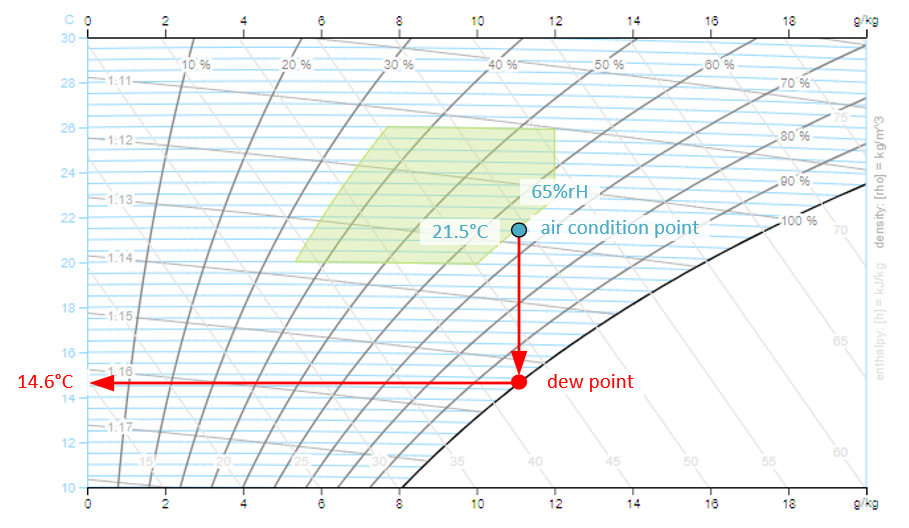General
People have very different requirements for comfort in a room. Therefore, it will never be possible to satisfy everyone completely. Rather, one must always reckon with about 5 to 10% dissatisfied people. [2]
Temperature
The comfort requirements have increased compared to the past and today, many people feel uncomfortable at 20°C [2]. Please consider that when looking at the left visualization which dates back to 1975 [3].
- From a comfort perspective the temperature should be between 21°C in winter and 26°C in summer. [2]
- Consider the following rule of thumb: per degree of higher room temperature about 6% more heating energy is needed. With well-insulated buildings, the value is even higher. [2]
- However, lower room temperatures can be compensated with appropriate clothing (socks, long pants, sweaters).
- Bedrooms in well-insulated and well-ventilated buildings may well have 18°C.
- But attention, lower temperatures result in higher relative humidities and can cause mould growth (see chapter “dew point temperature” below).
Humidity
Humidity in particular is a critical aspect in residential buildings, since most health impairments and building damage (condensation, mold) are due to humidity. Prolonged high room air humidity causes microbial growth [1].
Relative Humidity
- To anticipate it, the relative humidity should lie in residential buildings between 30% and 50%.
- In order to prevent problems with building physics, the relative humidity should remain below 50% (especially in older and poorly insulated buildings). [1]
- Very low humidity (<15% to 20%) causes dryness and irritation to eyes and airways. [1]
- From a comfort perspective the relative humidity should be between 30% and 65%. For a short time the 30% may also be undercut. [2]
- In extreme situations in winter, the relative humidity can fall below 30% for several days and then cause health problems for sensitive people. [1]
- Anyone who uses a humidifier should monitor the air humidity with a hygrometer and increase it only to a maximum of 45%. [2]
Absolute Humidity
- From a comfort point of view, people feel uncomfortable if the absolute humidity in the air rises above 12.0 g of water per kg of air, this is called the sultriness limit (“Schwülgrenze” in German). [1]
- This limit is visible in the hx-diagram where a vertical line cuts the comfort zone to the right at 12.0 g/kg. Hence at all points to the right of this limit the climate feels sultry.
Dew Point Temperature
- Condensation occurs on surfaces that are colder than the dew point temperature.
- The dew point temperature can be read from the hx-diagram:
References
[1] SIA Schweizerischer Ingenieur- und Architektenverein (2007). Eingangsparameter für das Raumklima zur Auslegung und Bewertung der Energieeffizienz von Gebäuden - Raumluftqualität, Temperatur, Licht und Akustik. (SN/EN, SIA 382.706 / EN ISO 15251).
[2] Balmer, M., Hubbuch, M., & Sandmeier, E. (2020). Energetische Betriebsoptimierung: Gebäude effizienter betreiben (1. Auflage). Fachbuchreihe «Nachhaltiges Bauen und Erneuern». FAKTOR Verlag AG. https://pubdb.bfe.admin.ch/de/publication/download/10042
[3] Frank, W. (1975). Raumklima und thermische Behaglichkeit: Literaturauswertung, durchgeführt im Auftr. d. Bundesmin. f. Raumordnung, Bauwesen u. Städtebau. Berichte aus der Bauforschung: H. 104.
